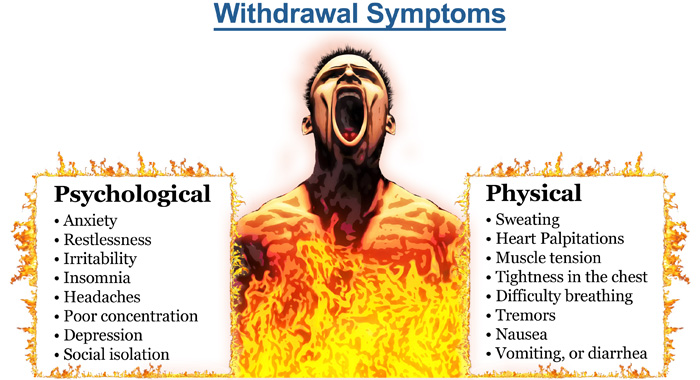Pain Pill Addiction: Basics
Breaking free of prescription drug abuse takes much more than willpower. As I often say, "You have to do it yourself, but you can't do it alone." There are individuals who claim to have "kicked" or achieved abstinence without any help, but I don't know many of them. Early on, before dependency sets in, it's possible to recognize the problem and stop using narcotics. Once dependence sets in, though, it's not so easy.
Fortunately, medications and counseling can improve the chances of success. Newer drugs like buprenorphine (sometimes combined with naloxone) and naltrexone and traditional therapies like methadone and 12-step programs, are helping thousands of people stay on the road to recovery.
Physical Dependence and Detoxification
Narcotic addiction leads to real changes in certain areas of the brain. Prescription drug addiction alters the circuits responsible for mood and "reward" behaviors.
In addition, long-term prescription drug abuse affects virtually all the systems in the body. Cutting off the supply abruptly leads to opioid withdrawal symptoms.
Symptoms of opioid withdrawal include:
- Craving for drugs
- Diarrhea
- Large pupils
- Yawning
- Abdominal pain
- Chills and goose bumps (the origin of the phrase "cold turkey")
- Nausea and vomiting
- Body aches
- Agitation and severe negative moods

A list of symptoms doesn't capture the agony of opioid withdrawal.
The syndrome is intensely unpleasant, and people will do almost anything to avoid it.
Opioid withdrawal lasts from hours to several days -- and sometimes weeks -- depending on how long and how much a person has used their drug of choice. After the intense initial symptoms subside, some physical and mental discomfort may persist for weeks.
Medications for Opioid Withdrawal
Opioid withdrawal is difficult to endure, and is a major reason for relapse and continued prescription drug abuse. Medications are used to prevent symptoms of opioid withdrawal during detox, easing the person out of physical dependence:
Methadone is a long-acting opioid drug. It activates the same opioid receptors as narcotics, effectively eliminating withdrawal symptoms. Providing the correct dose of methadone prevents opioid withdrawal symptoms and eases drug craving but it does not provide the euphoria. The dose can be slowly tapered off, freeing the person from physical dependence without withdrawal symptoms. Methadone is the most effective known treatment for narcotic addiction.
Buprenorphine and Naloxone (Suboxone) is a newer combination drug that helps for detox from prescription opioid addiction. Buprenorphine activates opioid receptors, reducing drug craving and preventing withdrawal. Naloxone helps prevent misuse of the medication.
Clonidine is a blood pressure medicine that acts on the brain. Clonidine reduces the effects of the "fight or flight" response, which is over-activated during opioid withdrawal. However, clonidine does nothing to reduce drug craving, and is mostly ineffective when used alone.
"Rapid detox" programs claim to accelerate the process of detox and opioid withdrawal by giving large doses of opioid blocking drugs. Some programs place an addict under general anesthesia during the detox process. These programs have not proven to be more effective than traditional methods of detox, and may be more dangerous.
Maintenance Therapy After Detox
Completing detox subdues the physical effects of narcotic addiction and opioid withdrawal. But experts say psychological and social factors are the main drivers that push addicts back to using. Stress and situations that remind the brain of the drug's pleasure are common triggers.
When drug cravings strike, they can be impossible to resist. Most people who go through detox and short-term counseling will relapse to prescription drug abuse.
Studies show that the chances of beating narcotic addiction are better with long-term maintenance therapy with either methadone or buprenorphine paired with naloxone (Zubsolv, Bunavail, Suboxone) . These drugs are used during the maintenance phase of treatment. People on these drugs are still opioid-dependent, but they are often freed from their destructive drug addiction. They can return to work, drive without impairment, and function normally in society. Naloxone has also been combined with oxycontin ( Targiniq ER ) to deter abuse by snorting or injecting the drug. A person can still become addicted by taking it orally, however.
Methadone is the best-studied, most effective method of recovery from narcotic addiction. Suboxone, while newer, has gained wide acceptance as maintenance therapy.
Some people have a high rate of relapse when maintenance therapy is stopped, and so they remain on the medicines for decades. In others, maintenance therapy is tapered off over months to years.
Naltrexone (ReVia, Vivitrol) is an opiate receptor-blocking medication used in maintenance therapy for narcotic addiction. Unlike methadone and Suboxone, naltrexone does not activate receptors at all, so it does not reduce opioid withdrawal or craving. However, because naltrexone blocks opiate receptors, a person won't get high if he or she uses drugs while taking the medicine. The drug is usually ineffective by itself, because people can simply stop taking it and get high shortly after.
Counseling and 12-Step Programs
Narcotics Anonymous (NA) is an international network of community-based meetings for those recovering from drug addiction. Modeled after Alcoholics Anonymous (AA), NA is a 12-step program with a defined process for overcoming narcotic addiction.
NA is an abstinence-based program. In principle, NA is opposed to the use of maintenance therapy. Methadone Anonymous is a 12-step program that acknowledges the value of methadone or Suboxone in recovery from narcotic addiction. Methadone Anonymous has caught on in California, but I don't know much about meetings in Texas. If you have information about Methadone Anonymous meetings, contact me.
Most of us who are experts in the field recommend participation in a 12-step program or other form of counseling. Therapy can take place as an outpatient, or in a residential facility. I discuss the value of 12 Step Programs on my FAQ page.